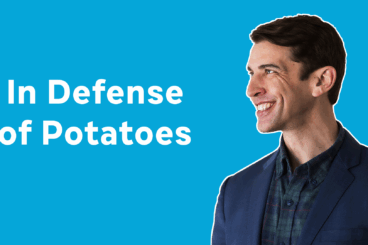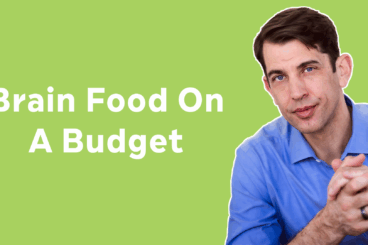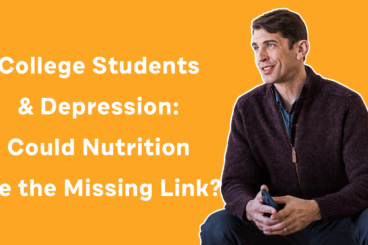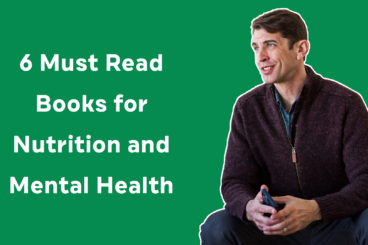Table of Contents
Can you heal your mental health in just six weeks by changing up the food you eat? I think that you can and that’s what I propose in my new book Eat to Beat Depression and Anxiety. This information is so interesting and new and there’s so much data around food and mental health. I want to walk everybody through the basics of the plan so you can implement some of these changes in your life or help somebody you love who’s maybe struggling with stress or their mental health in some way. I ask everybody to step back because, as a physician, who’s been talking about food for a couple of decades now, so many of us have a set of ideals or pieces of misinformation or just haven’t thought enough about our personal food values, our food culture and what we want to do with our eating choices. We’ve given those away to a lot of different folks and I think people should reclaim that. The most important aspect about nutrition is feeding your mental health, feeding your brain cells and your neurons so let’s really get that right. That’s what nutritional psychiatry is all about. A lot of us have different feelings and ideas about food and the other thing that’s different about nutritional psychiatry is as mental health professionals, we let people be their own eaters.
So let’s get into the plan because there are food categories that are really important for mental health. Why? Well, they simply have more of the nutrients that are important for how our brain functions. If you’re missing things like vitamin B9 or vitamin B12 or long chain omega-3 fats, research tells us your mental health just doesn’t fare as well over the long term. In fact, if you’re missing some of these nutrients, you’ll frankly, get depressed. So it’s really critical to get them in our food and from the most nutrient dense sources. These are some of the fundamental ideas in nutritional psychiatry. The idea is that every week you’re going to add in something new by focusing on a food category that’s critical for feeding your mental health.
Week 1: Leafy greens
Week number one is leafy greens. Why are leafy greens so good for your mental health? Well, there are a lot of reasons, but one is that they are nutrient dense. They bring a lot of different, both classic nutrients, vitamins and minerals, as well as phytonutrients, which are molecules that we find in plants that promote health and have a lot of fiber. Leafy greens are a great brain food because you’re getting a lot of these nutrients that you need for mental health and you’re getting a lot of satiation because you’re eating a fibrous food. I want you to diversify from simply eating salads and think about more than just kale or mixed greens. You can add a lot of varieties of greens in different ways and that’s the foundation of how nutritional psychiatry works.
Week 2: Rainbows
In week two I encourage you to think about rainbows. These are colorful vegetables. These are beneficial for our mental health because looking at different colors means you’re looking at different phytonutrients. There’s a lot of new data suggesting that these help us regulate inflammation via the microbiome.
Week 3: Seafood
Week three is seafood. Personally this was a very challenging category for me. As I mentioned in the book, I didn’t really eat any seafood until I was about 30 and now, years later, I really enjoy seafood. It’s a great food category. It’s the place that we find the concentrated source of long chained omega-3 fats and some very important nutrients like selenium and iodine. A lot of the different nutrients on the antidepressant food scale are found in seafood. Many people need help with their seafood intake so many recipes in Eat to Beat Depression and Anxiety like the dashi or the wild salmon burger are meant to help people incorporate more seafood in their lives.
Week 4: Nuts, beans and seeds
Week four is about nuts, beans and seeds. By now it’s been a month of incorporating some brain foods into your life, hopefully more leafy greens and rainbows and seafood. This next food category includes everything from one of my favorite recipes in the book, the cacao buckwheat pancakes, because cacao, the basis of chocolate is, is a seed from the cacao tree and is something that I wasn’t incorporating in my cooking at home. Now I use it all the time. Beans like white beans are a great source of potassium which is one of those antidepressant nutrients that a lot of people don’t know about, but is essential to our health and our mental health.
Week 5: Fermented foods
Week five is all about fermented foods. If you have been excited about brain food, or if you’re new to this space, the microbiome is a wonderful new concept. These are all of the organisms that live in our gut. They are bacteria, viruses and parasites that naturally live in our colon and they help modulate our immune system and inflammation. That’s a huge part of the new thinking about how we want to manage our mental health and take care of our brain. Fermented foods like kefir, kombucha, kimchi, and sauerkraut are foods that are in the recipes in Eat to Beat Depression and Anxiety, but also things foods we should all be thinking about adding to our diet.
Week 6: Love
Week six is the most important nutrient that we have in nutritional psychiatry: love. Love is at the center of us feeling good and secure. It’s the best signal of mental health when we’re receiving affection and love and giving that out to our community, to our friends and our loved ones. That takes effort and takes planning, which you can do with food. You can go to a farmer’s market and meet some of the people who grow your food, or have a potluck dinner. These are all opportunities where we can use food to deepen our connection with ourselves and with our community.
I hope this encourages and empowers you and shows you that there are things in our everyday life, like our diet that we can adjust to improve our mental health and take care of our great brains.




Hello Dr. Ramsey
I got interested in your diet / six weeks? /, Today I bought spinach, lettuce, parsley, broccoli and avocado And a green cucumber, I made a cocktail, it’s wonderful. Thank you very much, yesterday I announced your post on Facebook. Thank you, thank you, Maria
Thank you!